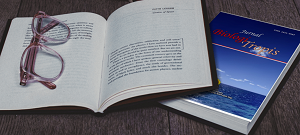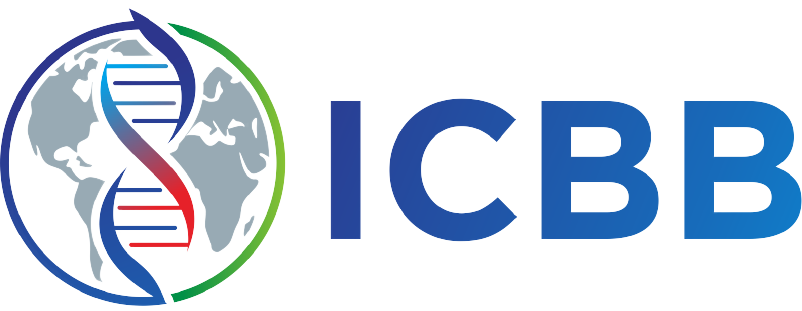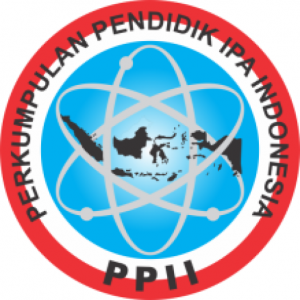The Study of Effectiveness of Chitosan from Pearl Oyster (Pinctada maxima) Shell as Antibacterial in Bone Scaffold Application
Authors
Mukaddam Alaydrus , Dyah Purnaning , Maz Isa Ansyori , Nonik Septiani , Geby Alawiyah , Susi Rahayu , Ahmad TaufikDOI:
10.29303/jbt.v25i1.8135Published:
2025-01-14Issue:
Vol. 25 No. 1 (2025): Januari - MaretKeywords:
Biomaterials; Degree of Deacetylation; Functional GroupsArticles
Downloads
How to Cite
Downloads
Metrics
Abstract
Chitosan is a functional material with potential for bone scaffolds due to its antibacterial properties, biocompatibility, biodegradability, low toxicity, and ability to support tissue regeneration and prevent infections in graft implantation.This study aims to identify changes in functional groups in each isolation process and identify the effect of chitosan concentration on the activity of Straphylococcus aureus and Escherichia coli bacteria. Chitosan isolation methods are demineralization, deproteination, decolorization, and deacetylation by microwave irradiation. Analysis of chitosan functional groups using FTIR, while antibacterial activity test using diffusion method. Isolation of chitosan from pearl oyster shells (Pinctada maxima sp.) obtained a degree of deacetylation of chitosan of 95.37%. Pearl oyster shell powder identified typical peaks of calcium carbonate (CaCO₃). The demineralized powder sample had calcium carbonate (CO₃²⁻) peaks that disappeared. Furthermore, the deproteinated powder sample produced peaks with amide groups (C=O dan N-H) of reduced protein. Decolorized powder samples did not show drastic changes in the bands of the deproteinated powder spectra, but the spectra could show cleaner and clearer peaks without any interference from pigments. The last, deacetylated powder sample showed a decrease in peak intensity in the 1650 cm⁻¹ (C=O amide). The analysis of the ability of chitosan to inhibit the growth of E. Coli and S. Aureus bacteria was effective at a minimum chitosan concentration of 20%. In comparison, antibacterial activity in S. aureus is better than in E. coli. Chitosan from this shell can serve as an antibacterial, but its manufacturing techniques need optimization for better efficacy.
References
Abolude, I. O. (2016). Modification of Emulsion Paint Using Chitosan-Grafted- Acrylic Acid [AHMADU BELLO UNIVERSITY]. In AHMADU BELLO UNIVERSITY. https://doi.org/10.13140/RG.2.2.30482.63686
Adam, A. A., Posangi, J., Tumewu, E., & Tallei, T. E. (2014). Aktivitas Antibakteri Ekstrak Kasar Tunikata Polycarpa Aurata Terhadap Streptococcus Mutans. In Dentire Journal (Vol. 3, Issue 2).
Akbarzadeh, I., Keramati, M., Azadi, A., Afzali, E., Shahbazi, R., chiani, M., Norouzian, D., & Bakhshandeh, H. (2021). Optimization, physicochemical characterization, and antimicrobial activity of a novel simvastatin nano-niosomal gel against E. coli and S. aureus. Chemistry and Physics of Lipids, 234(October 2020), 105019. https://doi.org/10.1016/j.chemphyslip.2020.105019
Alawiyah, G., Septiani, N., Rahayu, S., Kurniawidi, D. W., Ardianto, T., Budianto, A., Alaa, S., & Syamsuddin. (2024). Synthesis of nanochitosan from oyster pearl shell ( Pinctada maxima ) as renewable energy candidate. 7(2), 526–533. https://doi.org/10.29303/aca.v7i2.205
Amor, I. Ben, Hemmami, H., Laouini, S. E., Abdelaziz, A. G., & Barhoum, A. (2024). Influence of chitosan source and degree of deacetylation on antibacterial activity and adsorption of AZO dye from water. Biomass Conversion and Biorefinery, 14(14), 16245–16255. https://doi.org/10.1007/s13399-023-03741-9
Ardean, C., Davidescu, C. M., & Neme, N. S. (2021). Ardean2021.Pdf. Factors Influencing the Antibacterial Activity of Chitosan and Chitosan Modified by Functionalization, 22(14), 7449.
Capelo-Avilés, S., Tomazini de Oliveira, R., Gallo Stampino, I. I., Gispert-Guirado, F., Casals-Terré, A., Giancola, S., & Galán-Mascarós, J. R. (2024). A thorough assessment of mineral carbonation of steel slag and refractory waste. Journal of CO2 Utilization, 82(January). https://doi.org/10.1016/j.jcou.2024.102770
Destrianingtyas, A. S., Rahayu, S., Illahi, R. R., & Kurniawidi, D. W. (2024). Isolasi Kitosan dari Cangkang Kerang Mutiara (Pinctada Maxima) Menggunakan Deasetilasi dengan Gelombang Mikro. Kappa Journal, 8(2), 262–269.
Dubey, A., Vahabi, H., & Kumaravel, V. (2023). Antimicrobial and Biodegradable 3D Printed Scaffolds for Orthopedic Infections. ACS Biomaterials Science and Engineering, 9(7), 4020–4044. https://doi.org/10.1021/acsbiomaterials.3c00115
Fatima, B. (2020). Quantitative Analysis by IR: Determination of Chitin/Chitosan DD. In M. Khan, G. M. do Nascimento, & M. El-Azazy (Eds.), Modern Spectroscopic Techniques and Applications. IntechOpen. https://doi.org/10.5772/intechopen.89708
Gomes, L. C., Faria, S. I., Valcarcel, J., Vázquez, J. A., Cerqueira, M. A., Pastrana, L., Bourbon, A. I., & Mergulhão, F. J. (2021). The effect of molecular weight on the antimicrobial activity of chitosan from Loligo opalescens for food packaging applications. Marine Drugs, 19(7). https://doi.org/10.3390/md19070384
Gonçalves, C., Ferreira, N., & Lourenço, L. (2021). Production of low molecular weight chitosan and chitooligosaccharides (COS): A review. Polymers, 13(15), 1–23. https://doi.org/10.3390/polym13152466
Ha, S., Lee, J. W., Choi, S. H., Kim, S. H., Kim, K., & Kim, Y. (2019). Calcination characteristics of oyster shells and their comparison with limestone from the perspective of waste recycling. Journal of Material Cycles and Waste Management, 21(5), 1075–1084. https://doi.org/10.1007/s10163-019-00860-2
Handayani, D., Alaa, S., Kurniawidi, D. W., & Rahayu, S. (2022). Pengolahan Limbah Cangkang Kerang Mutiara (Pinctada Maxima) Sebagai Adsorben Logam Berat Fe. Jurnal Pertambangan Dan Ligkungan, 3(2), 10–15.
Khrunyk, Y., Lach, S., Petrenko, I., & Ehrlich, H. (2020). Progress in Modern Marine Biomaterials Research. Marine Drugs, 18(12), 1–47. https://doi.org/10.3390/md18120589
Kurniawidi, D. W., Alawiyah, G., Rahayu, S., Masruroh, Wirawan, R., Destrianingtyas, A. S., Septiani, N., Ardianto, T., & Illahi, R. R. (2024). Modification of Chitosan Isolation Method from Pearl Oyster Shell ( Pinctada maxima sp ) as A Source of Natural Polymer Modification of Chitosan Isolation Method from Pearl Oyster Shell ( Pinctada maxima sp ) as A Source of Natural Polymer. Journal of Physics: Conference Series 2866 (2024) 012015 IOP, 1–9. https://doi.org/10.1088/1742-6596/2866/1/012015
Lu, J., Wang, Z., Zhang, H., Xu, W., Zhang, C., Yang, Y., Zheng, X., & Xu, J. (2022). Bone Graft Materials for Alveolar Bone Defects in Orthodontic Tooth Movement. Tissue Engineering - Part B: Reviews, 28(1), 35–51. https://doi.org/10.1089/ten.teb.2020.0212
Magani, A. K., Tallei, T. E., & Kolondam, B. J. (2020). Antibacterial Test of Chitosan Nanoparticles against Staphylococcus aureus and Escherichia coli. Jurnal Bios Logos, 10(1), 7–13.
Muhardi. (2002). Isolasi dan Karateristik Komponen Antibakteri dan Biji Atung (Parinarium glaberrium Hassak). IPB University.
Ningsih, S. N. R., Tania, E., Azizah, N. N., Lutfiah, S. L., & Gunarti, N. S. (2022). Aktivitas Antibakteri Kitosan Dari Berbagai Jenis Bahan Baku Hewani : Review Journal. Jurnal Buana Farma, 2(4), 25–30. https://doi.org/10.36805/jbf.v2i4.576
Nurlaili, Alaa, S., & Rahayu, S. (2022). Modifikasi Teknk Isolasi Biopolimer Kitosan dari Cangkang Kerang Mutiara (Pinctada maxima) Sebagai Adsorben Zat Warna Metilen Blue. ORBITA. Jurnal Hasil Kajian, Inovasi, Dan Aplikasi Pendidikan Fisika, 8(2), 268–273.
Nurmaulida, S. E., Alawiyah, G., Rahayu, S., Taufik S, A., Hidayatullah, K., Kurniawidi, D. W., & Ali, M. (2023). FABRICATION OF CHITOSAN BIOPOLYMER FROM PEARL OYSTER SHELLS (Pinctada maxima) FOR MEDICAL APPLICATIONS. Indonesian Physical Review, 6(2), 240–249. https://doi.org/10.29303/ipr.v6i2.227
Pei, J., Wang, Y., Zou, X., Ruan, H., Tang, C., Liao, J., Si, G., & Sun, P. (2021). Extraction, Purification, Bioactivities and Application of Matrix Proteins From Pearl Powder and Nacre Powder: A Review. Frontiers in Bioengineering and Biotechnology, 9(April), 1–12. https://doi.org/10.3389/fbioe.2021.649665
Sadat, A., & Joye, I. J. (2020). Peak fitting applied to fourier transform infrared and raman spectroscopic analysis of proteins. Applied Sciences (Switzerland), 10(17). https://doi.org/10.3390/app10175918
Weißpflog, J., Vehlow, D., Müller, M., Kohn, B., Scheler, U., Boye, S., & Schwarz, S. (2021). Characterization of chitosan with different degree of deacetylation and equal viscosity in dissolved and solid state – Insights by various complimentary methods. International Journal of Biological Macromolecules, 171, 242–261. https://doi.org/10.1016/j.ijbiomac.2021.01.010
Yarnpakdee, S., Senphan, T., & Karnjanapratum, S. (2025). Structural characterization and antibacterial activity of pearl oyster ( Pinctada maxima ) shell as affected by calcination temperature. Journal of Agriculture and Food Research, 19(November 2024), 101551. https://doi.org/10.1016/j.jafr.2024.101551
License
Copyright (c) 2025 Mukaddam Alaydrus, Dyah Purnaning, Maz Isa Ansyori, Nonik Septiani, Geby Alawiyah, Susi Rahayu, Ahmad Taufik

This work is licensed under a Creative Commons Attribution 4.0 International License.

Jurnal Biologi Tropis is licensed under a Creative Commons Attribution 4.0 International License.
The copyright of the received article shall be assigned to the author as the owner of the paper. The intended copyright includes the right to publish the article in various forms (including reprints). The journal maintains the publishing rights to the published articles.
Authors are permitted to disseminate published articles by sharing the link/DOI of the article at the journal. Authors are allowed to use their articles for any legal purposes deemed necessary without written permission from the journal with an acknowledgment of initial publication to this journal.


























